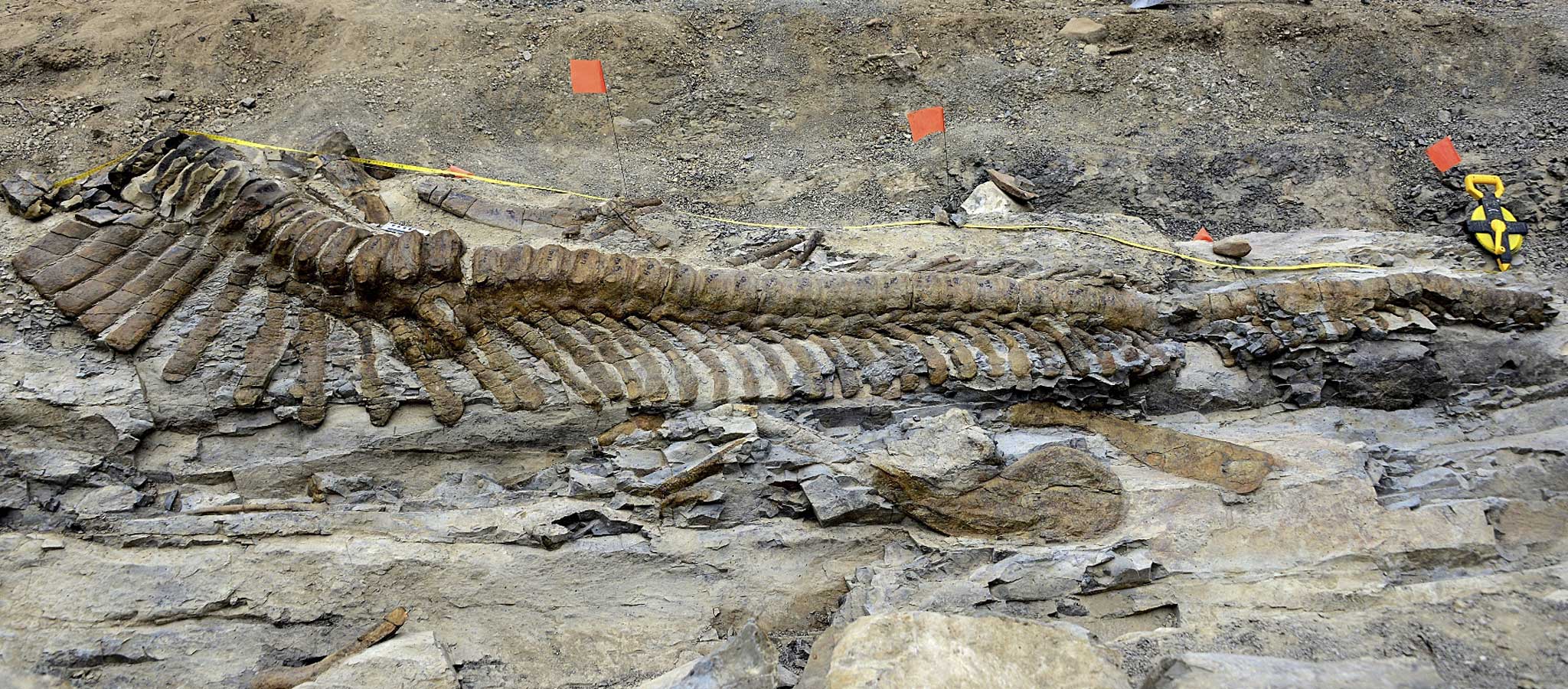Archaeologists discover dinosaur tail in Mexico's desert
The five-metre tail was the first ever found in the country
Your support helps us to tell the story
From reproductive rights to climate change to Big Tech, The Independent is on the ground when the story is developing. Whether it's investigating the financials of Elon Musk's pro-Trump PAC or producing our latest documentary, 'The A Word', which shines a light on the American women fighting for reproductive rights, we know how important it is to parse out the facts from the messaging.
At such a critical moment in US history, we need reporters on the ground. Your donation allows us to keep sending journalists to speak to both sides of the story.
The Independent is trusted by Americans across the entire political spectrum. And unlike many other quality news outlets, we choose not to lock Americans out of our reporting and analysis with paywalls. We believe quality journalism should be available to everyone, paid for by those who can afford it.
Your support makes all the difference.Archaeologists in Mexico have unearthed the fossilized remains of a 72 million-year-old dinosaur tail, the country's National Institute for Anthropology and History (INAH) said.
The five-metre tail was the first ever found in Mexico and was unusually well-preserved, said the INAH's director Francisco Aguilar.
The team of experts, made up of archaeologists and students from INAH and the National Autonomous University of Mexico (UNAM), said the tail belonged to a hadrosaur, or duck-billed dinosaur.
The tail, found in the desert near the small town of General Cepeda in the border state of Coahuila, probably made up half of the dinosaur's length, Aguilar said.
Archaeologists found the 50 vertebrae of the tail completely intact after spending 20 days slowly lifting a sedimentary rock covering the creature's bones.
Strewn around the tail were other fossilised bones, including one of the dinosaur's hips, INAH said.
Dinosaur tail finds are relatively rare, according to INAH. The new discovery could give further insights into the hadrosaur family and aid research on diseases that afflicted dinosaur bones, which resembled those of humans, Aguilar said.
Scientists have already determined that dinosaurs suffered from tumours and arthritis, for example.
Dinosaur remains have been found in many parts of the state of Coahuila, in addition to Mexico's other northern desert states.
"We have a very rich history of paleontology," Aguilar said.
He noted that during the Cretaceous period, which ended about 65 million years ago, much of what is now central northern Mexico was on the coast. This has enabled researchers to unearth remains of both marine and land-based dinosaurs.
The remains of the tail will be transferred to General Cepeda for cleaning and further investigation.


Join our commenting forum
Join thought-provoking conversations, follow other Independent readers and see their replies
Comments